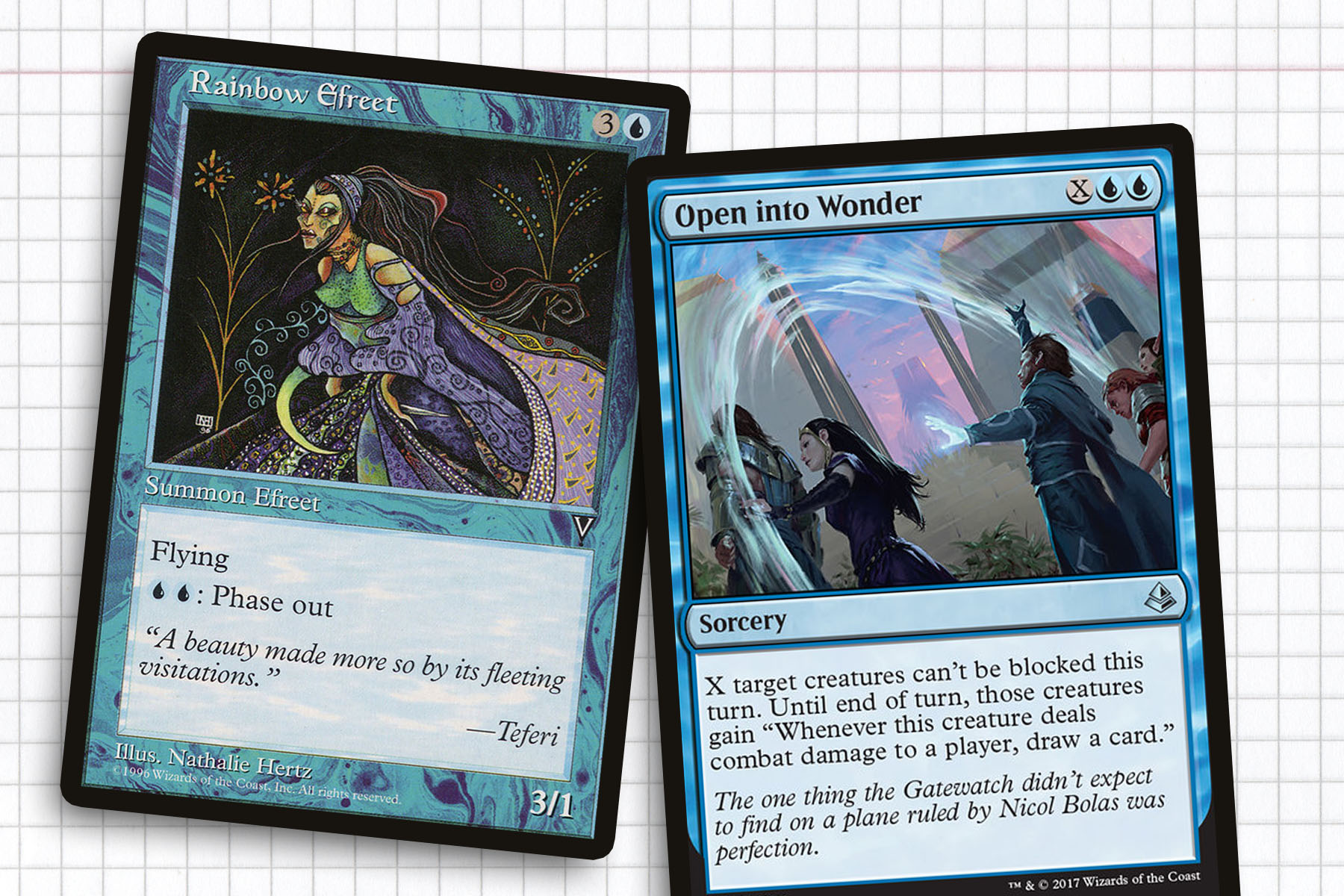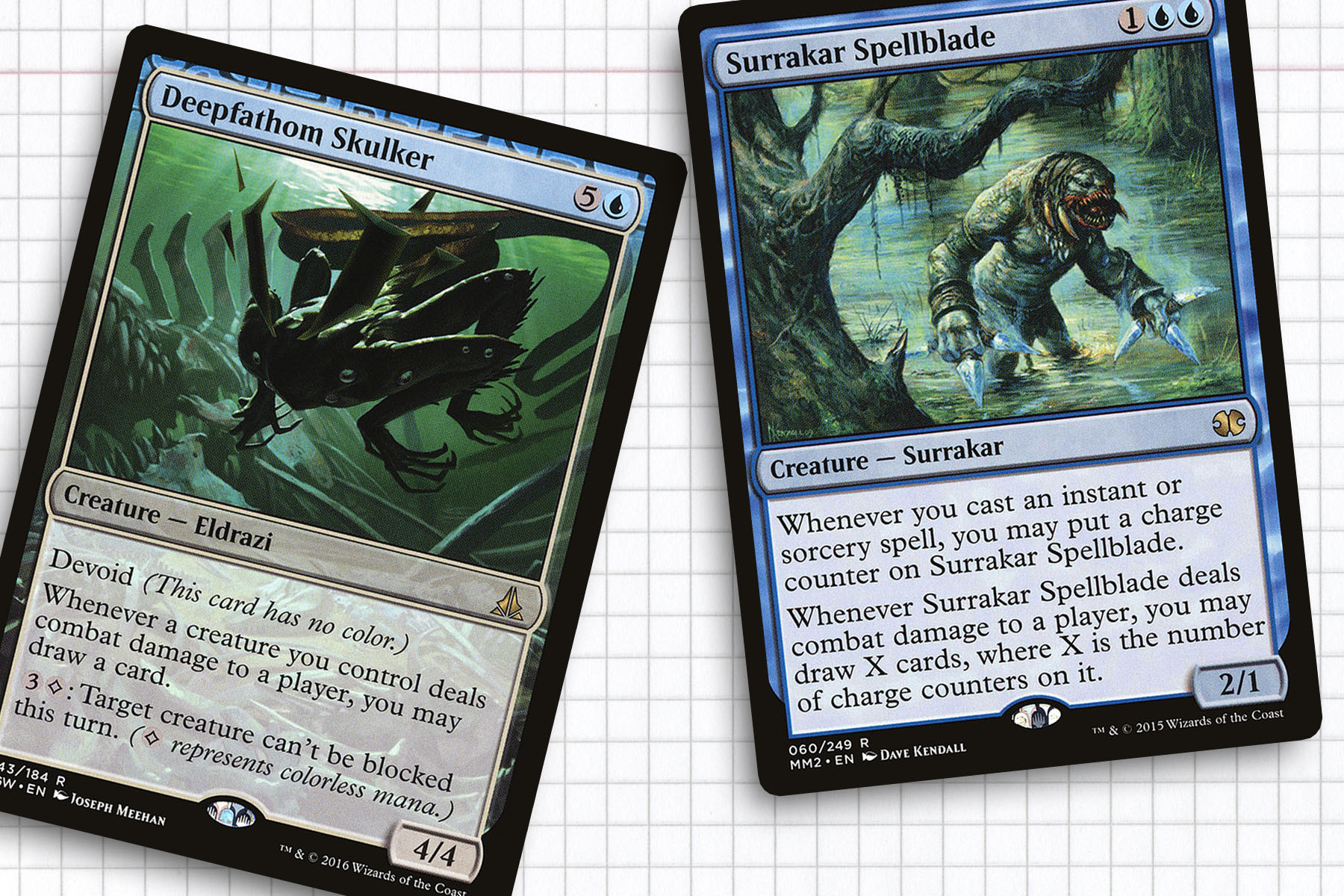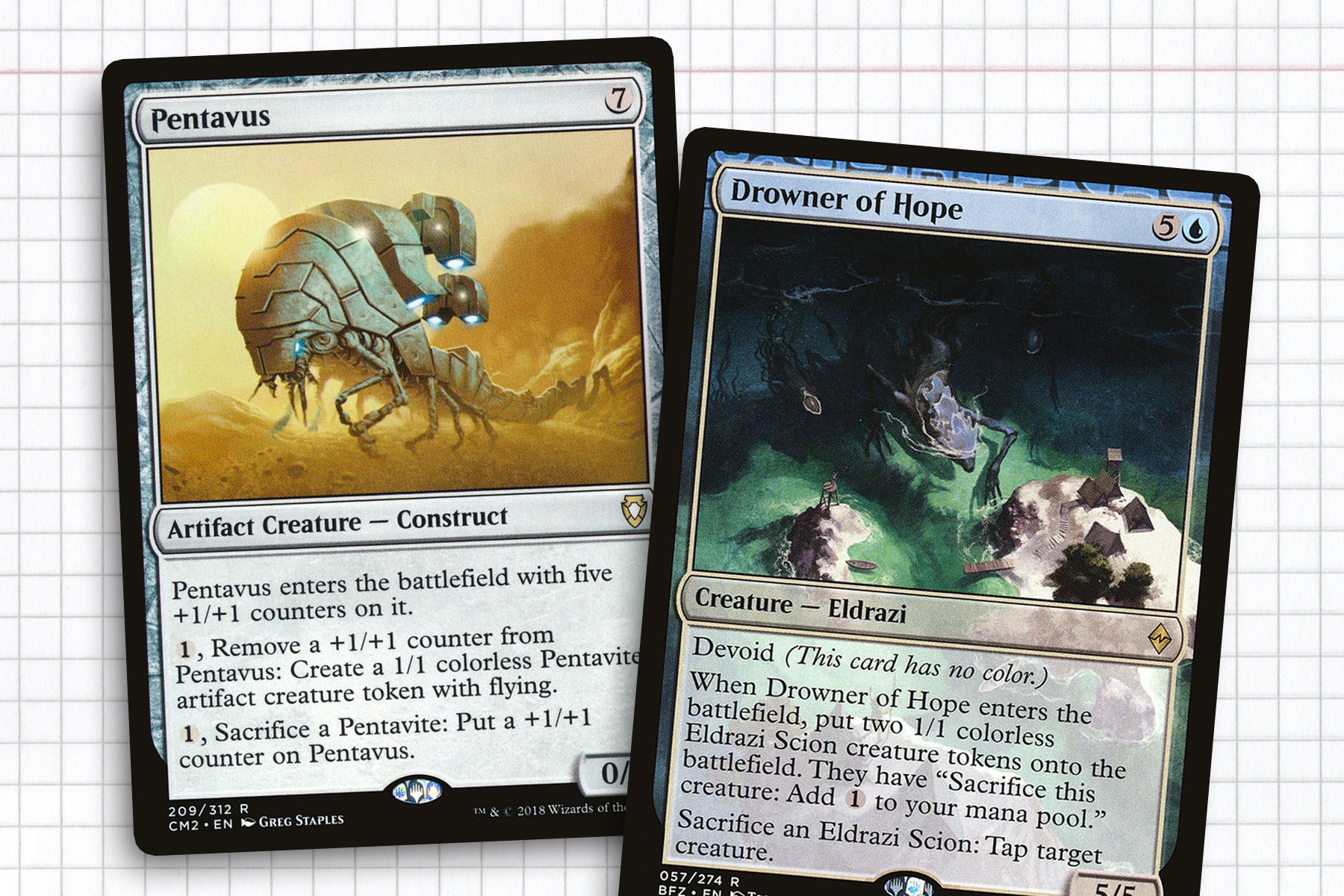Dollar General—[dol-er] [jen-er-uhl]
A variant of the Commander format, itself a casual multiplayer variant format for Magic: the Gathering with specific rules centered around a legendary creature called a General. The additional layer being that every card comprising a 100-card deck must cost less than a US dollar.
Dollar General is an interesting format to me, possibly because it seems like a home-grown format that warrants examination from time to time. As I’ve said before, it’s a great weekend metagame variant of Commander because of the fluctuation of prices of cards can mean that strategies that were not available two or three months ago are entirely viable with a new reprint or just something rotating out of Standard. Another attractive draw is just how simple it can often be to build a deck, relying on draft fodder and the kinds of rares that normally just take up space in a trade binder.
This week I would like to use the lens of Dollar General to examine a card I had dismissed upon my first impressions, Tetsuko Umezawa, Fugitive. I now see her as a representative of an archetype that is needed across the Commander format in general and is luckily also available in Dollar General: the mono blue aggressive deck. In many respects, Talrand, Sky Summoner can often play this role. But as a token maker with a reliance on spells to fill the board, I would contend that the two generals are not playing the same space. One is the golden number the week, and it’s going to show up in a lot of places.
Tetsuko Umezawa
As somebody who started playing Magic in the early 2000s, one of the narrative highlights was the novels accompanying Kamigawa block. This was unfortunately in direct contrast to how the actual sets were received. At the time my Vorthos knowledge was not nearly as sharp as it is now; so when a character named Toshiro Umezawa showed up, I only saw him as the cool roguish black-aligned hero of the block. By story’s end we learned that he was the progenitor of a bloodline we had seen in Legends in the form of Tetsuo Umezawa, with Kamigawa block being in the distant past.
Tetsuo was an imperial champion of Madara. In an effort to to restore peace to the empire, Tetsuo was the person responsible for defeating Nicol Bolas, even if only for a few centuries. Tetsuko Umezawa, Fugitive is our modern-day member of Clan Umezawa and fugitive because the now very alive Bolas has made it a point of honor to snuff out the entire Umezawa bloodline. Her card mechanically fits her ability to slip through spaces through a series of magical doorways and the implied ability to allow others to as well.
When I first read her card, I was rather unimpressed. I thought the design was clever enough and understood some of the story was trying to tell, but I didn’t see the potential of the card. Weird, since I had built an entire article around Cao Ren, Wei Commander being the black Invisible Stalker; and now we had a much closer fit that did the same thing for an entire side of the battlefield. Obviously I have come around, particularly through the lens of Dollar General.

Evasion is Key
Much of this deck should feel an awful lot like my writings on Cao Ren. But one of the big divergent points will be that this deck is looking to fill the board with creatures instead of trying to do a Voltron strategy. The search for creatures with one power or toughness is pretty simple. As such I’d like to just eliminate some of my favorite cards that fit into the strategy before moving on to what I hope to see the deck do beyond creature combat.
Doing my research into my card options, it became obvious that the decks that have been submitted to EDHrec are not entirely wrong in their deck construction; but I was surprised that there were some gaps in usage of creatures like Plasma Elemental, Rainbow Efreet, and Mirror-Mad Phantasm. All of which are good on their own for the purposes of attacking, but also great on theme with what this deck is trying to accomplish. Tetsuko reads like the kind of deck that will win through a hundred and twenty small cuts with 1/1s, but by packing the deck with fragile creatures that are front loaded, we can be attacking for larger sums of damage.
What I think the hivemind of deck builders has gotten right is the use of creatures like Riptide Entrancer and Soul Seizer to be Mind Control effects that get around the Ruric Thar, the Unbowed decks that might pop up from time to time. Mindshrieker and Pulsating Illusion are both creatures that can inflict larger chunks of damage once they have evaded blockers, while also being card that require the rest of the table to read because they’ve never seen them.

Political Sabotage
Without question, the next place my mind went while building around Tetsuko was leveraging the unblockable nature of our creatures. This pushes us to lean into what Magic players colloquially call saboteur effects. To my surprise, Bident of Thassa is a Dollar General legal card while being indicative of what we’re going to be wanting to do with each point of damage: gain card advantage. This effect is duplicated by Deepfathom Skulker, but is also natural to creatures like Marchesa’s Infiltrator and Surrakar Spellblade.
But where I am more interested in saboteur effects is on cards like Spellbinder and Specter’s Shroud, where we can gain advantage is new ways. Equipped to a creature like Anvilwrought Raptor or in tandem with Bladed Pinions, a creature could deliver first strike damage, casting an imprinted Wings of Velis Vel or Dance of the Skywise to deliver more damage. Finally, we can set our opponents back in any number of different ways, whether with Mistblade Shinobi alone or with our whole team through Arm with Aether, leaving the game with no friends.

Going Wide
Pentavus and Thopter Spy Network are that breed of cards that don’t immediate seem like they might have a place in this deck, but create some many viable attackers that they quickly recoup value. This got me thinking about the ease of token production available. Tokens strongly lean into one of the great elements of Tetsuko, the fact that any creature can be a threat, meaning we don’t have to put all our eggs into one basket suiting up one particular creature.
Shrine of Loyal Legions is not the kind of card that will amass us an entire strike force during a rotation of the table; but if we look at it like a Chasm Skulker, we can see the value. For a low cost, Shrine can sit out on the battlefield for much of the game and be the ace in the hole when you finally want to get your large swarm of attack through. Aether Swooper, Aspiring Aeronaut, and Aviation Pioneer all become unblockable, while creating more 1/1s. And possibly my favorite of all, Drowner of Hope is large body that comes down after a board has been swept and refills our side of the table.
Time and time again I learn to not always go with my gut when making judgments about new cards during preview season, and this is probably one of the best examples. It’s a new effect that we haven’t seen before, and those kinds of things should be red flags that there is something that can be done. Brainstorming with this deck makes me really excited for the next night at Dollar General I partake in, whether it be a regular game night or a deck swap.
Join me next week when we can discuss another crazy brew, this time not focused around the general specifically, but a card hidden within the deck. And join me on my Twitch stream at HipsterSainio every Tuesday night at 8 CST. The first few weeks that I’ve been streaming have already been enlightening for me, but I hope that I can also be entertaining.
Ryan Sainio is a Graphic Designer who writes about EDH, the EDH community, and streams on Twitch in his down time. He has been playing Magic: The Gathering since 7th Edition in 2002 and values flavorful and fun gameplay over competitively optimized decks. Join him for a stream at twitch.tv/hipstersainio on Tuesday nights.

